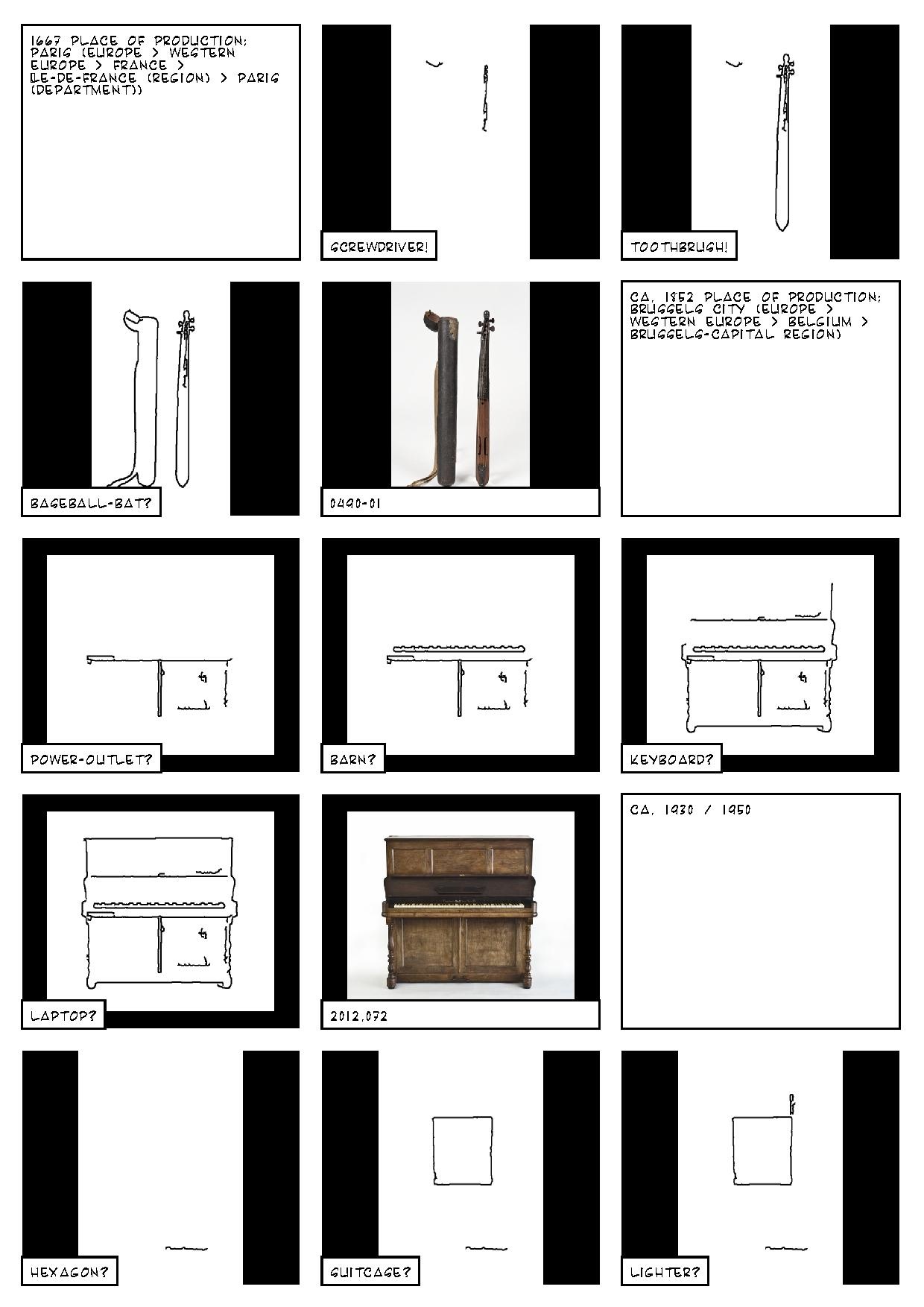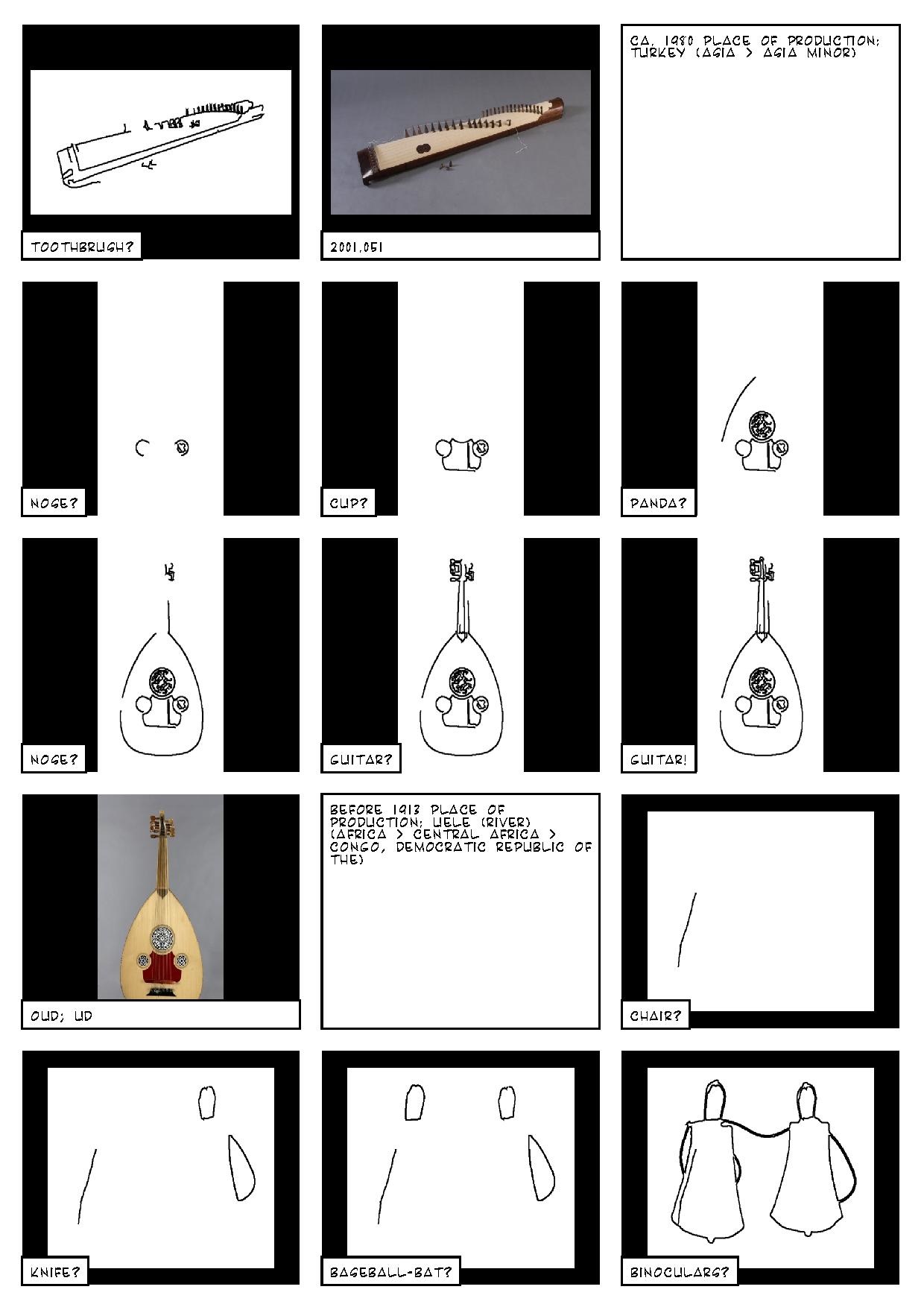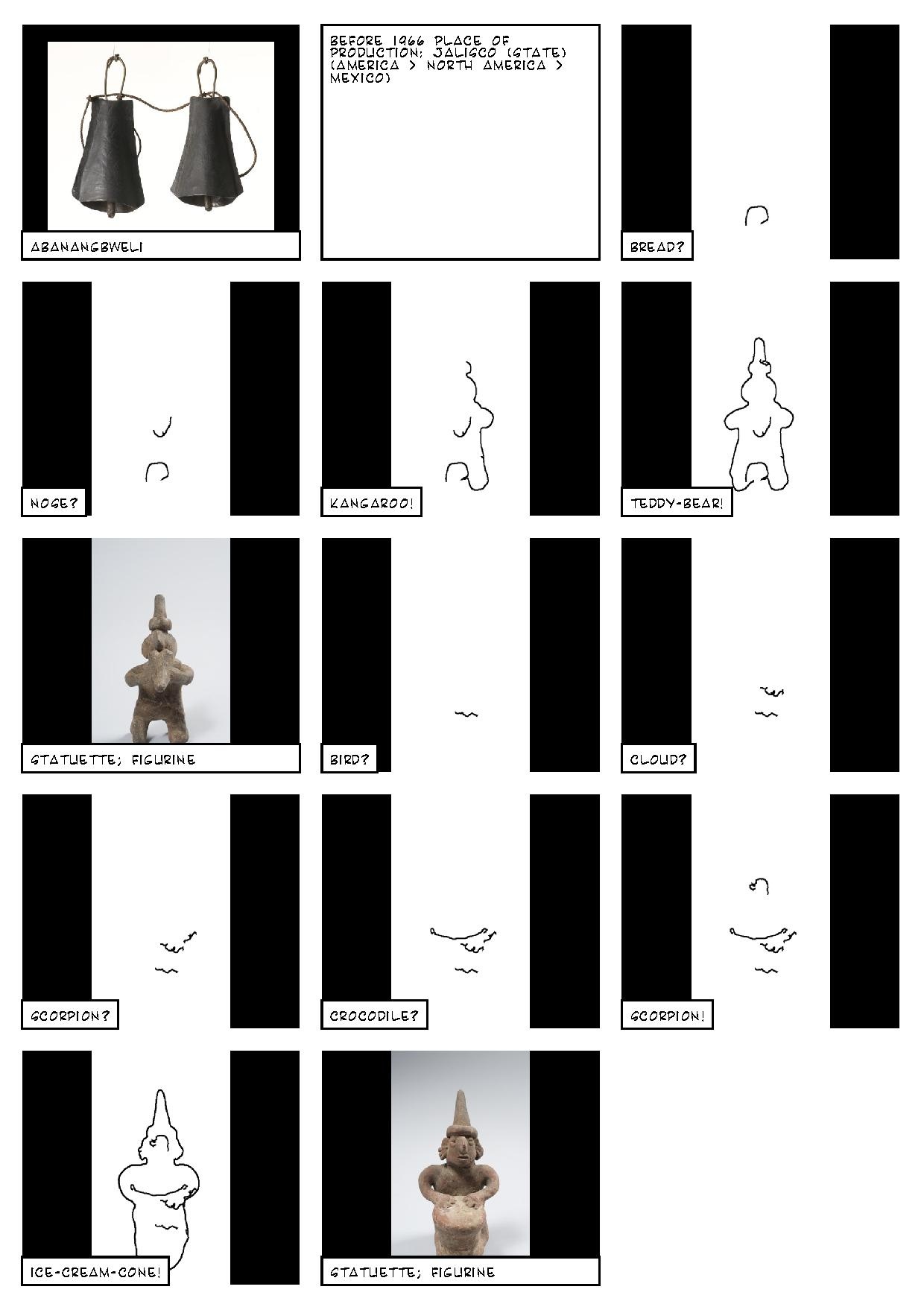Difference between revisions of "Projects:Sketchy recognition"
Jump to navigation
Jump to search
| Line 2: | Line 2: | ||
<div class="metadata"> | <div class="metadata"> | ||
==== Nicolas Malevé, Michael Murtaugh ==== | ==== Nicolas Malevé, Michael Murtaugh ==== | ||
| − | |||
| − | |||
[[File:Sketch-recognition.pdf|frame]] | [[File:Sketch-recognition.pdf|frame]] | ||
[[File:Sketch-recognition.pdf|page=2|frame]] | [[File:Sketch-recognition.pdf|page=2|frame]] | ||
| + | |||
| + | <div class="noprint"> | ||
[[File:Sketch-recognition.pdf|page=3|frame]] | [[File:Sketch-recognition.pdf|page=3|frame]] | ||
[[File:Sketch-recognition.pdf|page=4|frame]] | [[File:Sketch-recognition.pdf|page=4|frame]] | ||
| − | |||
| − | |||
[[File:Splitscreen05.png|frame|Early sketch]] | [[File:Splitscreen05.png|frame|Early sketch]] | ||
| Line 27: | Line 25: | ||
== Sketchy recognition == | == Sketchy recognition == | ||
| − | Bread, Nose, Kangaroo or Teddy Bear? | + | '''Bread, Nose, Kangaroo or Teddy Bear?''' |
A photograph from the collection of the Museum of Musical Instrument is processed by a contour detector algorithm. The algorithm draws the lines it found on the image sequentially. While it is tracing the contours, another algorithm, a sketch detector, tries to guess what is being drawn. Is it bread? A kangaroo? It is a teddy bear. | A photograph from the collection of the Museum of Musical Instrument is processed by a contour detector algorithm. The algorithm draws the lines it found on the image sequentially. While it is tracing the contours, another algorithm, a sketch detector, tries to guess what is being drawn. Is it bread? A kangaroo? It is a teddy bear. | ||
| Line 73: | Line 71: | ||
== Reconnaissance Esquissée == | == Reconnaissance Esquissée == | ||
| − | Du pain, un nez, un kangourou ou un ours en peluche? | + | '''Du pain, un nez, un kangourou ou un ours en peluche?''' |
Une photo de la collection du Musée des Instruments de Musique est traitée par un algorithme de détection de contours. L'algorithme dessine les lignes qu'il trouve dans l'image l’une après l'autre. Pendant qu’il trace les lignes, un autre algorithme, un détecteur de croquis, essaie de deviner ce que les lignes représentent. Est-ce du pain? Un kangourou? C'est un ours en peluche. | Une photo de la collection du Musée des Instruments de Musique est traitée par un algorithme de détection de contours. L'algorithme dessine les lignes qu'il trouve dans l'image l’une après l'autre. Pendant qu’il trace les lignes, un autre algorithme, un détecteur de croquis, essaie de deviner ce que les lignes représentent. Est-ce du pain? Un kangourou? C'est un ours en peluche. | ||
| Line 120: | Line 118: | ||
== Schetsmatige herkenning == | == Schetsmatige herkenning == | ||
| − | Brood, Neus, Kangoeroe of Teddybeer? | + | '''Brood, Neus, Kangoeroe of Teddybeer?''' |
Een foto uit de collectie van het Museum of Musical Instrument wordt verwerkt door een algoritme om contouren te detecteren. Het algoritme tekent de lijnen die het op de foto heeft gevonden een voor een. Terwijl het de contouren traceert, probeert een ander algoritme, een schetsdetector, te raden wat er wordt getekend. Is het brood? Een kangoeroe? Het is een teddybeer. | Een foto uit de collectie van het Museum of Musical Instrument wordt verwerkt door een algoritme om contouren te detecteren. Het algoritme tekent de lijnen die het op de foto heeft gevonden een voor een. Terwijl het de contouren traceert, probeert een ander algoritme, een schetsdetector, te raden wat er wordt getekend. Is het brood? Een kangoeroe? Het is een teddybeer. | ||






